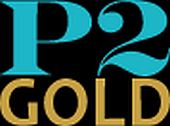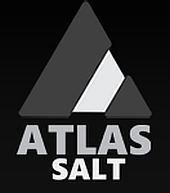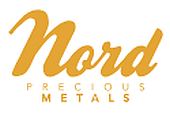 Focus Graphite can tailor graphite to customer specs
Focus Graphite can tailor graphite to customer specs
INDEPENDENT TEST: FOCUS GRAPHITE SUCCEEDS IN PRODUCING EXTREMELY HIGH-PERFORMING COATED SPHERICAL GRAPHITE FOR LITHIUM ION BATTERIES
Focus Graphite Inc. has provided the results from coin cell tests for the lithium ion battery market recently performed on Lac Knife spherical graphite (SPG).
Focus Graphite is the sole owner of the world-class, high-grade Lac Knife natural flake graphite project in Quebec. The company’s aim is to become one of the lowest cost producers of high-purity technology graphite from a vertically integrated business strategy.
Testing was conducted by a globally recognized, North American laboratory with particular expertise in processes related to lithium ion battery technologies. Its clients are some of the most advanced technology-related corporations in the world. The laboratory has completed its testing and has measured the performance properties of Lac Knife’s materials on an environmentally sustainable basis. Focus Graphite has withheld the name of the laboratory for reasons of commercial and competitive confidentiality.
Highlights
- Lac Knife SPG battery tests evaluate three proprietary formulations that responded very well to CR2016 coin cell performance testing.
- Large-, medium- and fine-micron-size produced outstanding performance metrics.
- Testing results on the premium medium and fine grades exceed the performance of benchmark commercially available grades by significant percentages.
- Tests confirm Focus’s capability to tailor lithium ion battery anode grade graphite and value-added products to meet the most stringent customer specifications.
Reversible Irreversible Surface Focus Graphite capacity capacity loss area coin cell test samples (Ah/kg) (%) (m2/g) Coarse carbon-coated SPG grade (D90: 42um) 362.1 6.80% 0.64% Medium carbon-coated SPG grade (D50: 24um) 363.7 1.44% 0.48% Fine carbon-coated SPG grade (D50: 17um) 365.1 1.01% 1.14%
A benchmark commercial grade of SPG provided a reversible capacity (RC) in the range of 345 to 355 ampere-hour per kilogram (Ah/kg) and an irreversible capacity loss (ICL) of 6.5 per cent, a significantly higher loss compared with the 1.44-per-cent and 1.01-per-cent ICL for Lac Knife’s medium and fine grade samples shown in the table.
In lockstep with industry
“Recent comments by leading North American auto makers signalled two significant market realities,” said Focus chief executive officer and director Gary Economo.
“The first is the need to lower the costs of battery materials to encourage broader consumer interest in moving to electric vehicles. The second is that the potential North American battery market may well enjoy a much larger than anticipated growth in demand,” Mr. Economo said.
“Again, these results add another layer of material value that holds the potential to derisk even further our global enterprise goals,” he said.
A detailed summary of the SPG tests is provided below.
SPG grades developed by Focus Graphite may help to solve one of the more difficult challenges holding back market growth for Li ion batteries, “increasing cycling capacity.” One of the problems in using carbon-based materials in Li ion batteries is that it results in the formation of a solid electrolyte interface (SEI) layer which produces an irreversible capacity loss which generally ranges between 5 and 10 per cent for benchmark SPG grades currently available in the marketplace.
Irreversible capacity loss means that a portion of the valuable lithium and graphite is wasted. Thus the efficiency is reduced and the cost increased. Lac Knife anode graphite is unique in having such a low loss.
Two premium (medium and fine) grade SPGs developed by Focus have achieved first cycle irreversible capacity losses of 1.44 per cent and 1.01 per cent, respectively, truly remarkable results. These lower ICL values of the SPG grades produced by Focus can lead to the production of higher capacity and longer life Li ion batteries.
Furthermore, the low surface areas of the premium coated grades of SPG at 0.48 and 1.14 per cent cubic metres per gram can help to improve the safety of Li ion batteries. The use of higher surface area carbons in these batteries can cause the temperature of the battery to increase and possibly result in the occurrence of thermal runaways.
“Commercially and competitively, these results open the door for Focus to confidently accelerate our plans to market and sell our battery grade, high margin products to potential partners and customers,” said Focus president and chief operating officer Don Baxter.
“The data presented validates Lac Knife’s potential to become a North American source of low-cost high-purity flake graphite concentrate that could, possibly, lead to the production of batteries with better performance,” Mr. Baxter stated.
“Further, these results enable us to continue with our vision of producing value added products. In particular, Focus’s director of manufacturing and technology Dr. Joseph Doninger and our consultant, Mr. George Hawley, have the capability to lead Focus through the development of various lithium ion battery products with the aim of building higher margin applications and downstream products,” Mr. Baxter said.
Dr. Doninger said, “The Lac Knife premium medium and fine grades of coated SPG at 1.44 per cent and 1.01 per cent first cycle irreversible capacity losses and 0.48 and 1.14 m2/g surface areas are better than any similar sized SPGs that I’ve ever seen.”
Battery manufacturers require a cost competitive alternative to current sources of natural SPG. China produces about 90 per cent of the world’s purified natural SPG, utilizing methods that are generally regarded as environmentally unsustainable.
Qualified persons
Don Baxter, PEng, Focus president and chief operating officer, is a qualified person as defined by NI 43-101 guidelines, has reviewed and approved the technical content of this news release.
http://www.focusgraphite.com/category/news-releases/
































